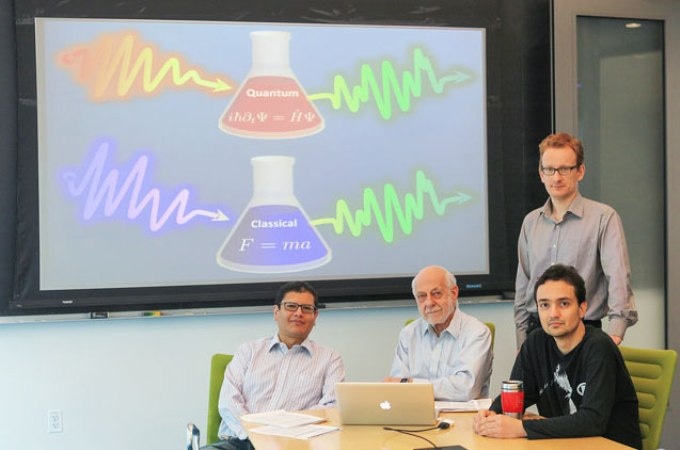Mar 1 2017
 CREDIT: Photo by C. Todd Reichart, Department of Chemistry.
CREDIT: Photo by C. Todd Reichart, Department of Chemistry.
Right from the Middle Ages, alchemists have sought to transmute elements. A well-known example of this is the long pursuit of turning lead into gold. In the modern era, transmutation has been achieved, however, on a minute scale with the aid of an enormous particle accelerator.
Recently, theorists from the Princeton University have suggested an alternative approach to achieve the long-time goal of making one material to look like another. In relation to this, the researchers have published a computational theory in the Physical Review Letters journal on 24 February 2017. The theory indicates that any two systems can be made to behave in an identical manner, be it for just the smallest fraction of a second.
Under such a circumstance, if two objects have “look” identical to each other, they must reflect light in an identical manner. The technique developed by the researchers at Princeton University involves the use of light to bring about non-permanent alterations to the molecules in a substance such that the molecules mimic the reflective characteristics of molecules of another substance.
Such a potential could provide inferences in optical computing, a field in which electrons are substituted by photons with greater ability of improving processing power but has been highly challenging to engineer. It can also be used in the case of molecular detection and experiments where high-cost samples can be substituted by inexpensive alternatives.
It was a big shock for us that such a general statement as ‘any two objects can be made to look alike’ could be made.
Denys Bondar, Associate Research Scholar, Princeton University
Bondar is the co-author of the study and an associate research scholar in the laboratory of co-author Herschel Rabitz, who is a Princeton’s Charles Phelps Smyth ’16 *17 Professor of Chemistry.
The researchers have hypothesized that the light bouncing off a molecule or any other substance can be controlled by regulating the light shone on it, thus enabling them to alter the way it looks. Such a manipulation requires a strong light source such as an ultrafast laser and will last just for a femtosecond, that is, one-quadrillionth of a second.
The ultrafast laser pulse is different from normal light sources in that it is intense enough to initiate interaction with molecules and consequently distort the electron cloud in the molecules without actually altering their identity.
The light emitted by a molecule depends on the shape of its electron cloud, which can be sculptured by modern lasers.
Denys Bondar, Associate Research Scholar, Princeton University
The researchers used advanced computational theory and developed a technique known as spectral dynamic mimicry, which enabled the calculation of the shape of the laser pulse, including wavelength and timing, to generate any desired spectral output. Put differently, making two systems to look identical.
In contrast, such a spectral control can also be applied to make the two systems look very different from each another. The researchers propose that this differentiation can be valuable for molecular detection applications such as differentiating toxic chemicals from the safe ones.
According to Shaul Mukamel, a chemistry professor from the University of California-Irvine who works in collaboration with the Rabitz lab but was not a part of this research, the Princeton research is an important breakthrough in an active and significant research area known as coherent control where light can be regulated to control the molecular-level behavior in various systems.
Mukamel further added that the Rabitz lab team has played an important role in this area for many years, and that the team has achieved advancement in quantum computing and in applying light to initiate artificial chemical reactivity.
It’s a very general and nice application of coherent control. It demonstrates that you can, by shaping the optical paths, bring the molecules to do things that you want beforehand—it could potentially be very significant.
Shaul Mukamel, Chemistry Professor, University of California-Irvine
The paper titled “Making distinct dynamical systems appear spectrally identical” was published in Physical Review Letters on 24 February. Grants from the National Science Foundation (CHE 1464569), the U.S. Department of Energy (DE-FG02-02-ER-15344), the Army Research Office (W911NF-16-1-0014), the Defense Advanced Research Projects Agency (DARPA) (W911NF-16-1-0062), and the Air Force Office of Scientific Research Young Investigator Research Program (FA9550-16-1-0254) supported the study.